The Racing Pigeon Loft Part 2
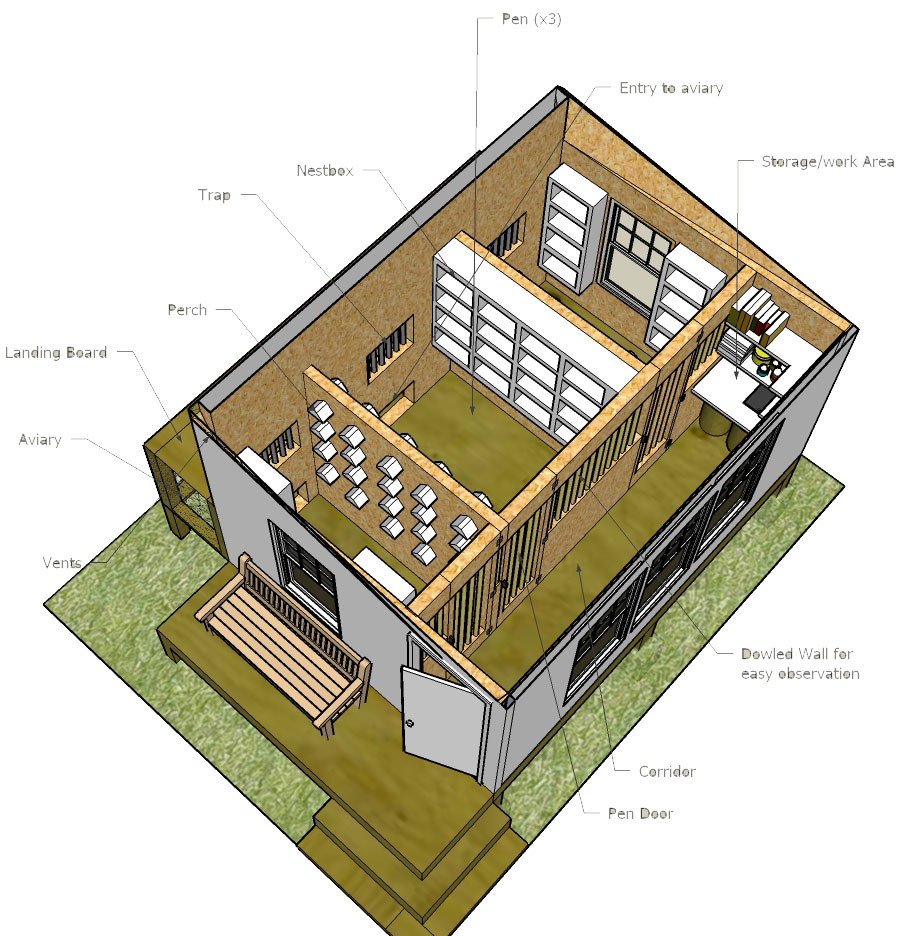 Ventilation
Ventilation
When the air inside the loft is not as fresh as the outside air, then there is a ventilation problem.
The traditional Australian loft is open at the front and gets good race results in areas with low humidity (non-coastal and inland regions, South Australia etc.). Such a loft requires little other ventilation other than vents on the back and side walls of the loft. Place the vents under the perches rather than at the top, so that the air does not pass over the birds resting in the perches. The flow of air over the birds created by incorrectly placed vents is referred to as a draft and causes illness by preventing the birds from resting.
The creation of proper ventilation in enclosed lofts is more difficult to achieve and in dry areas it is often better to avoid enclosed lofts. However, in high humidity and very cold areas the loft must be enclosed at night to maintain the form of the fit race team, although it is opened up as much as possible during the day. The best lofts can be opened up during the day and closed up at night, when it is raining or during cold humid weather.
More ventilation is required in closed lofts than open lofts. Ceiling or wall ventilation fans are often used to improve the circulation inside the loft. Vents placed on the back and side walls near the floor are open during the day and on warm nights and closed when it is wet or cold. Double-check the quality of the air inside an enclosed loft by asking an asthmatic friend to stand inside and pass an opinion as to the freshness of the air.
Pigeon numbers
Overcrowded lofts do not race to their true potential. Overcrowding increases fighting, creates restlessness and increases the staleness of the air. Overcrowded lofts have consistently good droppings, although the birds may be healthy. Often healthy nutty droppings return when the numbers are decreased. The best race results occur when the numbers are kept around 25 birds per 6 foot x 6 foot by 6 foot loft.
Wetness in the loft
Waterproofing the loft is a priority, because wet floors endanger the health of the birds. Fit race birds immediately lose form and often succumb to coccidiosis three days after the floor gets wet. Disinfecting or cleaning the loft using water must be reserved for warm days or allowed to dry whilst the birds are out exercising. Concrete slabs hold water and are not recommended for race lofts and must be designed to drain and dry quickly when used beneath elevated flights during the race season.
Clean loft
Pigeons love a clean loft and rest better when the perches and floor are cleaned free of droppings. Sand on the floor looks good, but is not recommended during the cold months of the racing season. At this time the birds may suddenly over-engorge on it and lose form because of the resulting “gut ache”. Pigeons love to lie down on straw but it must be perfectly fresh, clean and be free of dust or moisture. Black marks and a musty smell to the straw indicates mould on the straw, which can damage the pigeons airsacs when inhaled.
The loft is cleaned at least once and even better twice daily during the racing season.
Twice daily cleaning allows the fancier to monitor the health of the race team very closely. A change in the droppings is then recognised very early and the appropriate remedy (either rest, water cleanser, medicines, loft heaters etc.) can be quickly and effectively prescribed. The design of the loft must be such that scraping is made as easy as possible. The floor should be perfectly flat and smooth and the perches must be wide enough and brought out from the wall for easy scraping.
Loft position
The best lofts are positioned in the yard to get the most amount of sunlight from the day during the racing season. In Australia, the best direction to face the loft is between North West to North East, because the sun moves northward during the winter months of racing. Lofts need as much sunlight as possible. They also need space to breathe fresh air and are best away from trees, fences and be elevated.
The resting pigeon
The best designed lofts create an environment that is so relaxing that during the day and at night-time the birds lie down on the ground or on the perch with their wings hanging loose. The compartment sizes should not be too large, but small and low enough for the fancier to catch the birds easily without chasing them around the loft. The race team is tamer and more relaxed in a loft with smaller compartments. The best size sections are 6 inches higher than the fancier, 6 feet deep and 5 feet wide.
Loft materials for ceilings, walls and floors
In high humidity areas the ceiling and walls of the pigeon loft must be lined if consistent racing results are to be enjoyed. Masonite and wood are better insulators than metal. The best floor for racing is made of wood (form ply or marine ply) because it is a good insulator, stays warm, and is smooth for effective scraping. It can be unscrewed and replaced with wired floors during the off season if required. Wood floors are harder to disinfect. Concrete floors are not recommended in the race loft because they are cold and retain moisture, but they are good for the breeding loft and can be used for the race loft if they are centrally heated. In high humidity areas wire floors are not recommended for racing because the droppings beneath the wire accumulate moisture and grow fungus, which causes moulding disease. They are acceptable in dry areas and during the breeding season, but must be treated for fungus and insects regularly.
The Racing Pigeon Loft Part 2 by Dr. Rob Marshall
The Leading Online Pigeon Racing and Racing Pigeons Magazine – The Pigeon Insider



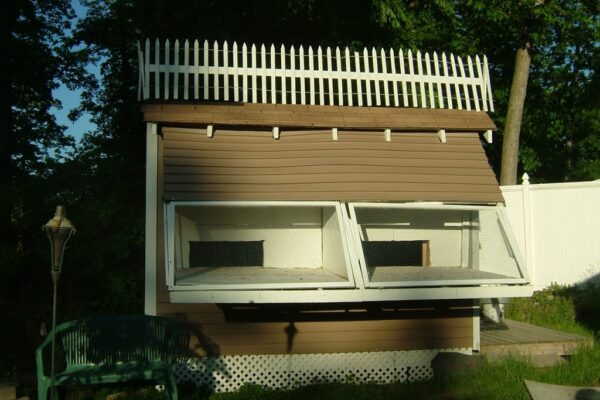
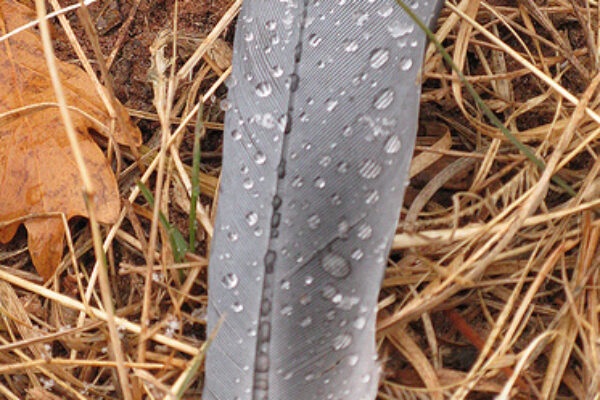

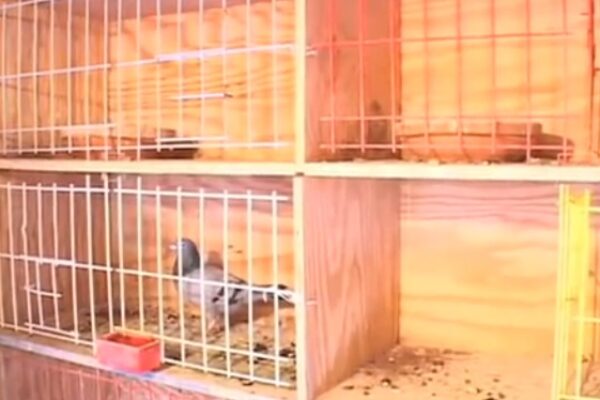
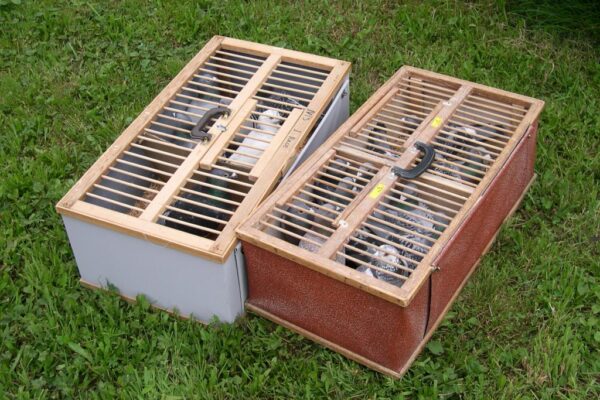


I ENJOY YOUR PROGRAM KEEP UP THE GOOD WORK.IN SOME AREAS OF THE COUNTRY THERE ARE MORE PIGEON FLYER THAN THERE WAS IN THE 1960 & 1970 AREA. IN THE CITIES WHERE ROOF TOP LOFTS WERE THE RAGE THEY HAVE REDUCED THE NUMBERS.THE ONE LOFT RACES MAY BRING BACK THE FLYERS THAT HAVENT THE TIME TO TRAIN AND RACE THE OLDFASHONE WAY.THE BIG THING IS TO GET THE KIDS INTERESTED EARLY.
Hi guys, new to the hobbysport. Just a few quick questions in regards to the loft. I noticed in the diagram that you have three separate sections. Now I do understand the need for separate sections, as in separating young and old birds, and separating during the mating season, but it each section has their respective trap and aviary door, couldn’t the birds still access the other sections by going through the different entrances? And do you have to train each bird to use a specific trap to their corresponding section?
Thanks for your replies in advance,
Chris
Hi all, I am new to the hobby/sport, and am in the process of building my loft as we speak. just a few quick questions: I know some of the reasons behind having multiple section in the loft; as in seperating old birds from young birds, seperating cocks from hens in the mating seasons, etc. But i noticed in the illustration that you have three sections, with each section having its own respective trap and aviary entrance. First question is do you have to train each bird to use individual traps according to their sections? And second is can’t the birds just go into their aviary entrances and enter another section? Thanks for your replies in advance guys.
chris
Hi Chris,
I find the articles from Insider magazine very helpful and informative. I would love to get some advice about proper ventilation for aloft on Long Island, NY. The loft is 20’Lx10’Wx10’H with a peak roof. We get some very rainy,humid,and cold day sometimes. I would like to know where do the intake and exhaust`vents go. Especially
when it comes to nestboxes or perches on back wall. Exhaust vents go over or under
these fixtures. Or just put a exhaust fan in the attic with adjustable sliding ceiling and intake vents at floor level front.
Thanks, Nick Demas
that was mint reading
Hi Chris,
Thanks much for the articles on the “racing pigeon loft”part 1 and 2. For me , very informative. I actually found a site that had loft design plans and printed all that out, and now I have your articles. Up to this point, I was comfortable with pigeon info I had researched, but not very when it came to the loft, both in design and function.I am getting more comfortable with it and should soon be building my loft. Can’t wait!! I just need to get a better understanding of placing the birds in which parts of the loft.
Chris, keep up the great work,as I am new to this site but really enjoy the articles and the comments from the fancey.
Thank you.
John
THANK YOU VERY MUCH FOR ALL INFOMATION SPECIFICALLY FOR PERCH.
Ventilation and not drafts are key, a dry loft is essential. A good sound health routine, if one is sick why treat them all? Remember races are not won from a bottle. Common sense is essential. Do not over crowd, more is not better, quality with less is better. Remember you can buy the man’s birds but you can’t buy the man. Do what you feel is best for the birds not the flyer. There is no short cut in this sport you get out of it what you put into it. So enjoy what you do and don’t make it a job. What works well in one area may not suit another area. Keep them healthy, motivated and most of all love home and you will be successful.
If you want to be on the top of the race result listing. The best stock you can acquire. Cleanliness, cleanliness cleanliness… Good clean feed, GOOD VENTILATION – FRESH AIR and the little tricks that you think will work for you teas garlic etc brewars yeast, honey,vitamines, probiotics, whey. electrolites … Keep em flyin love peace and happiness A friend in the sport.
Brite – Knight Lofts
Good.